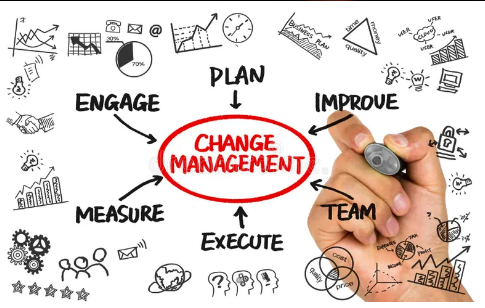
How Culture Change Affects Business: A Deep Dive into the Impacts and Strategies

Culture change. It’s easy to say than to do. Today’s dynamic business environment demand that businesses change. One of these changes is culture change. Culture may not be spoken about, but you will find people follow and believe certain things within the organization.
Recently, when talking with one of client’s employees, mentioned how they have been sidelined by the new manager. The discussion got my attention and I had to dig deeper to understand how that happened. As I learnt, when the new manager came, she introduced new policy that guide business operations. This employee had lost hope, loyalty, focus and he wanted to look for another employer.
Above example, indicates how change of culture can have effect even in individuals. Either technological driven, or because of other organizational dynamics, it affects both business and people.
This article dives into how culture change affects business operations, employee morale, and customer relations. Further, it offers strategies that organizations can embrace from the changes.
Employee productivity and engagement
At the heart of every organization is employees. So, the immediate effect of culture change is on its people. Whether positively or negatively, culture change affects how people respond to their routine responsibilities. A well-managed culture change inspire creativity, improve motivation and create an environment where people collaborate. On the other hand, a poorly- executed culture change, create exactly the opposite. It causes resistance, confusion, burn-out, disengagement among other negative effects towards employees and organization in entirety.
Relationship with customers.
Have you ever been to a place with high customer interaction and engagement and all over certain it changes? In modern businesses, customer interactions and relationships are digitally driven. A culture change that encourage continuous learning and innovation secures better position to adapt to change in the market. But a resistant to change culture stifle innovation. When people are used to operating in outdated processes, new technologies may feel like a threat to their jobs thus leading to inertia.
Studies indicate that companies with engaged workforce have higher rates of satisfaction. This results from enthusiasm about their work which drive them to work beyond expectations. This translates to better service for your customers. In essence, when culture is set right, it makes employees be your ambassadors thus creating a strong relationship with customers.
Business Performance and Competitive advantage.
When an organization adapt their culture to align with strategic goals, it has high probability to gain competitive advantage. Be it technological, more inclusive practices, or fostering sustainability improves company’s reputation and the bottom-line.
On the flip side, when organizations fail to align its culture with market needs and shifts, it risks losing relevance and competitiveness. Where there is misalignment, it leads to missed opportunities and probably poor performance.
In brief, culture change affect businesses in:
- How people communicate,
- How people make decision,
- How people respond to management and authority,
- How likely people will ask questions or highlight a problem.
- How people perceive verbal and physical communications
- How people will perceive business dynamics and embrace changes.
Strategies for Managing Culture Change.
Successfully navigating cultural transformation requires intentionality, transparency, and a commitment to continuous improvement. Here are some key strategies for managing culture change effectively:
-
Leadership Alignment and Communication
Leadership plays a crucial role in driving culture change. When leaders actively champion and model the desired cultural shifts, employees are more likely to embrace the new direction. Consistent, transparent communication from leadership about the reasons for change and how it benefits both the company, and its employees is vital in reducing resistance and building buy-in.
2. Employee Involvement and Feedback
Culture change should not be a top-down initiative. Engaging employees at all levels in the process helps create a sense of ownership and accountability. Encouraging feedback, listening to concerns, and involving employees in decision-making can smooth the transition and ensure that the new culture reflects the values and needs of the entire organization.
3. Training and Development
Investing in training and development programs can help employees adapt to new cultural expectations. Whether it’s learning new technologies, understanding diversity and inclusion initiatives, or improving collaboration, continuous learning opportunities are critical for long-term success. Providing the tools and support employees need to thrive in a new cultural environment is key to minimizing disruption and maximizing productivity.
4. Measuring Progress and Adjusting Strategies
Culture change is an ongoing process, not a one-time event. Businesses should establish clear metrics to track the impact of cultural shifts on employee engagement, customer satisfaction, and business performance. Regularly reviewing and adjusting strategies based on these insights can ensure the company remains agile and responsive to both internal and external changes.
In a nutshell, the complexity of fast-paced world, the ability to adapt to culture change can make or break a business. When handled thoughtfully, cultural transformation can unlock innovation, drive employee engagement, strengthen customer relationships, and enhance overall performance. However, it requires careful planning, inclusive leadership, and a willingness to listen and evolve.




